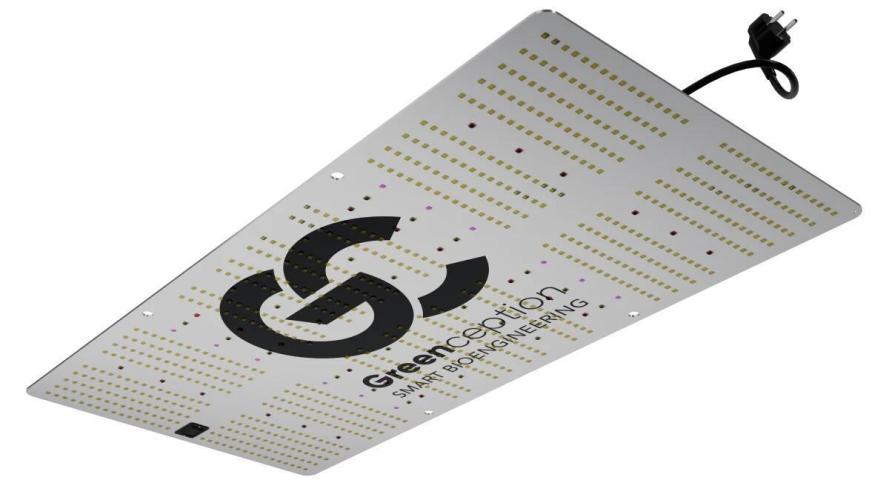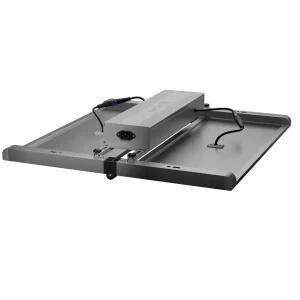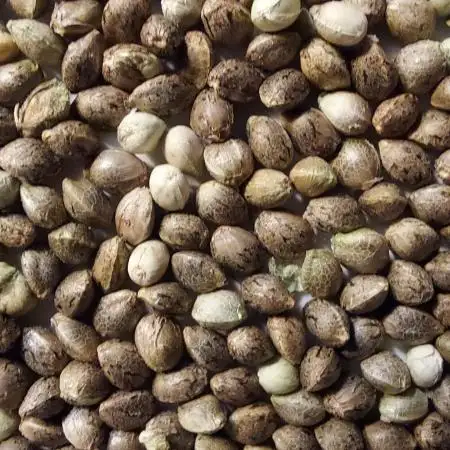The Grow Awards 2026 🏆 






















What kind of lamp should I use?
Sinnsstarted grow question 4mo ago
I was wondering if I would notice a difference if I switched from the GC Europe 250 Watt to the Caluma Force LED 320 W?
Thankyou for infermation :)
Solved
Setup. Lighting
likes
HandsomeTerpzanswered grow question 4mo ago
Hi mate, really good question! Choosing the right grow light is one of the most important decisions you’ll make. Here are a few points you should go through before buying:
1️⃣ Grow space size how big is your tent or grow area? The size will decide how much coverage you need.
2️⃣ Wattage think about how many watts you want to run and how much heat your space can handle.
3️⃣ Budget be honest with yourself about what you want to spend. Lights are an investment, but there are good options in every price range.
👉 With that information, you can start looking for a full-spectrum LED. A good full-spectrum light will give you blue/UV light for healthy veg 🌿 and enough red/far-red for a strong flowering phase 🌸.
The balance between these spectrums is key for dense, resinous buds.
Here are some solid manufacturers to check out:
Sanlight – premium quality, amazing efficiency, long lifespan. If budget doesn’t matter, this is the top choice.
Migro – great balance of price, spectrum, and efficiency. Perfect if you want pro-level results without spending too much.
Lumatek / Greenception / Vivosun – also strong brands, each with good options depending on your budget and tent size.
💡 My personal setup: I run a Migro lamp and I’m very happy with the performance. For veg, I also use a budget-friendly Lumenking 400W (around €160) which works surprisingly well. This combo gives me excellent growth while staying cost-effective.
⚡ Pro tip: Don’t just go for the cheapest lamp, because weak spectrum balance or low efficiency will cost you more in the long run (heat, electricity, weaker yields). Sometimes spending a bit more upfront pays off with better harvests and lower running costs.
00110001001001111Oanswered grow question 4mo ago
The caluma force 320watt spec sheet is a giant load of bullshit. They misrepresent umol/s based on highest value ontheir par map, which is retarded and wrong. that would mean the efficacy is 3.8 range not 2.7, which is impossible because nothing is that efficient on the market. Also, it's using the 2835 diodes, which are not as efficient as the lm301 diodes. There is a huge variance in efficiency among the lm281 lm283 et al 2835 chips... some are really shitty efficacy, the B+ pro is maybe 10-15% less than the lm301.
So, their spec sheet cannot be trusted. you'd need to look into the exact diodes used, how hot they are running them (watts per diode) then compare to a real specification sheet on samsung.com. anything above what they were tested at will reduce longevity and efficacy further from spec sheet listings.
Ahh.. further down the math adds up better but they definitely do some sketchy things in their spec sheet. 2.65umol/J x 320 = 830umol/s
----
The GC Euro 250 watt
At least the numbers they put onthe spec sheet make sense -- 250w x 2.7umol/J = 675umol/s
Whether or not that is accurate, again, you'll have to get the diode model number and calculuate how many watts per diode they are running at and then compare to the real spec sheet on samsung.com for that diode model number. Anything above testing paramaters will significantly effect longevity and efficacy.
----------------
lying on a spec sheet for a grow light is the common practice, but still a bad omen. There are 'good' lights with bullshit spec sheets. Also, the major difference in quality in grow lights is their longevity and efficacy. Out of the box, even an inefficient light that provides the proper DLI to the plants will have good results. They merely die faster (the diodes, not plants) and create more heat. The latter of which can be a benefit in some contexts, but reduced longevity is 100% a negative.
------------
Final conclusion, assuming the umol/s production is accurate, which is not a sure thing.
830umol/s vs 675umol/s of PAR. One is simply stronger and can cover a larger area of plants while providing optimal DLI.
The following are rough estimates.. local variables will impact exactly how much you can give to a plant. so "10.375" is just a ballpark and there will be some give or take due to local variables.
12 hour operation and providing ~37DLI based on output of light (will be less, but it is overshooting the DLI target to start, which makes up for photons lost to radiance or absorbed by walls):
830 / 80 = a little over 10.375 sq ft of coverage .. just under 1m^2 ...
675 / 80 = 8.4375 sq ft of coverage... a 3x3 is fine for this light, too.
If you grow autoflowers, exclusively... 18 hour operation (proportional to change in hours, all other factors remaining the same)
10.375 * 1.5 = 15.56 sq ft
8.4375 * 1.5 = 12.66
So, the size of your tent may make the choice for you. On paper both lights say they are roughly equal efficacy. They are both quantum boards. You'll have to do the grunt work and compare testing specs for diode manufacturer to the light manufacturer's spec sheet to figure out if the information listed has any integrity. That might impact your choice too.
The closer the light runs the diodes to samsun specs (or osram or bridgelux etc) the more you can trust any high-end numbers, like 2.7-3.0 umol/j efficacy... only the well made stuff that doesn't cut corners hits those numbers.
2 likes
Complain
Similar Grow Questions
Solved

newbieeeeem7
LED distance in grow 80x80x160I placed the LED at a distance of 45-50cm from the seeds
and consequently it was about 65-70cm from the larger plant.
I have 4 plants
Is it ok like this?
I don't have a luxmeter and I use the phototone app to get an idea of the PPFD in each plant.
LED QB 120w, LM301H
Setup. Lighting
3y ago
1
2
Solved

Mossyman88
Can I move autoflowers into a different tent when they are in bloom mode with a different light strength?Hi guys,
I currently have 6 AUTOFLOWER plants in a 4x4 tent with 600hps,I am thinking of putting two of the smaller plants into my 3x3 tent which has a 400w HP's bulb,plants have between 5 and 7 weeks to go,is it too late to do this?would they get stressed with different light?
Week 8
Setup. Lighting
5y ago
3
Solved

CaninhaSativa
regarding the light spectrum ratio. what is the ideal light spectrum for both the vegetative and flowering phases?
Do you use 3500K lights during the vegetative stage, or only use cold white lights at 6000K? do you then switch in flower to 3500K lights along with 370-780nm?
Setup. Lighting
1y ago
6
2
Solved

DWCpaqy
Grow light and LST with DWCI have 1000w(120w) led going 24h and sometimes 18/6h. I look like they love the lamp but I have a new 600 Hps lamp and wounder when I should put this on?And when should I start with LST? I think I can start already? And do you have tips how to LST with DWC. How can I change waWeek 2
Setup. Lighting
3y ago
1
3
Solved
smokinchicken_420
Duda sobre HPS y HQI en espacio pequeño y de maderaHola amigos, soy nuevo en esta historia de cultivo. Tengo un espacio así: Altura - 1,60cm; Profundidad - 0,45cm; Largura - 0,48cm. Eso es una parte interna del armario de mi cuarto, asi que es de madera. Yo puedo hacer un esquema de lampara HPS y HQI en este espacio? Y el calor?Setup. Lighting
5y ago
1
Solved

alien_grower
Efficient lightingKeeping both 200w VEG and 300w FLOWER lights 24h is too expensive for my alien wallet. So I left the veg light under 12h/12h and flower on.
Please share with me some of your past experiences and how can I save money and grow killer yields.
👋👽
Week 5
Setup. Lighting
5y ago
4
4
Solved

Blubbiblubb
How to manage a tall plant with a thick stem in week 1 of flowering?One plant I ordered online was pre-grown. Now, it’s about 20 cm taller than my other plants. At the top, the taller plant gets more than 1000 PPFD, while the lower canopy gets about 500 PPFD. It’s currently week 1 of flowering. The stem is too thick to bend down.What would youdo?
Plant. Too tall
Setup. Lighting
1y ago
5
7
Solved

Dmelo
Viparspectra p1500 flower?Anyone use a viparspectra p1500 during flowering? Got this as a cheap intro led and I feel like the plants stay in cottonball phase of flower...brought one outside and now its loaded with buds. Idk if this one has slow genetics or if the light isnt delivering correct spectrum
Buds. Other
Setup. Lighting
4y ago
3
3
Solved

Bushbaby808
Is my LED up to Par??Hi Folks,
I was just wondering if anyone could help me with regards to how efficient my LED is, I've always wondered if I made a good purchase or not??
There's obviously a whole lot better out there nowadays!!!
I'm growing in a tent 3'x3'x6
Many Thanks 👍😊
Week 5
Setup. Lighting
6y ago
3
3
Solved

Spiritsnsmokes
what are you suggestions on Home-Made LEd grow lights and also if you can reccomend cheap alternatives please how i can make this work?Hello there, fellow growers. I am facing trouble finding a LED grow light in my country right now. I saw a couple of DIY ideas to make a homemade LED grow light using a panel and LED Strips. Can I grow using my own grow light? how many watts of led do I need for 3x3 space?Setup. Lighting
5y ago
1
Solved

ZigkGrow
Light doesnt cover every potSo i've got 2 plants under one cfl lamp and i observed that that 1 girl is reclining to the right.
As i see my Cfl this girl is standing right below the plastic part of the cfl and obviously gets less sun.
How can i fix this? Changing place my pots every day will do the job?Week 2
Setup. Lighting
5y ago
2
2
Solved

NarcissisticEcho
How much light for a stunned seedling?If my seedling is stunned, how much light in watts should I give to her? Does it make sense to give minimum light to help recover after over-feeding? (in my case 11w all spectrum bulb).
I mean to help her to focus on recovery, not on reserving energyPlant. Too short
Setup. Lighting
Germination. Substrate
4y ago
2
Solved

Sheldor
Hight ProblemsI’ve got 3 plants in my tent, but they’re all different heights. To compensate, I’ve hung my light at an angle, so one end is closer to the smaller plants.
My question is: Does this help, or am I better off keeping the light level? Any tips for dealing with uneven plant heights?
1y ago
2
5
Solved

YellahJelle
Weak full spectrum led place in front of window enough to finish bloom?The weather looks really bad so i guess i need to take her inside a lot. I place her inside a barn in front of the glass door but she still hasnt there much light there. I ordered a 40 Watt full spectrum LED to add on the sunlight. Just read "used power 10 W" Will that be enough
5y ago
3













